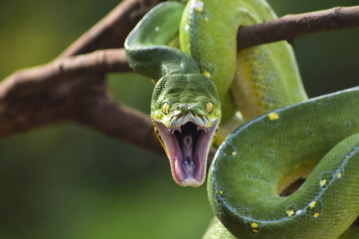Green Tree Python
Reptilarium Animals
Green Tree Python
Conservation status (Least Concern)
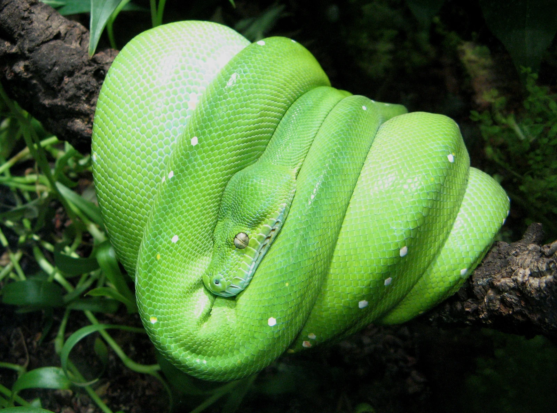

The green tree python (Morelia viridis ) is a species of snake in the family Pythonidae. The species is native to New Guinea, some islands in Indonesia, and the Cape York Peninsula in Australia. First described by Hermann Schlegel in 1872, it was known for many years as Chondropython viridis. As its common name suggests, it is a bright green snake that can reach a total length (including tail) of 2 m (6.6 ft) and a weight of 1.6 kg (3.5 lb), with females slightly larger and heavier than males. Living generally in trees, the green tree python mainly hunts and eats small reptiles and mammals. It is a popular pet, and numbers in the wild have suffered with large-scale smuggling of wild-caught green tree pythons in Indonesia. Despite this, the green tree python is rated as least concern on the IUCN Red List of endangered species.
The Green tree python is a non-venomous snake native to New Guinea, islands in Indonesia, and Australia. As its name suggests, it is a bright green snake, with females slightly larger and heavier than males. The belly of these snakes is yellowish in colour and some individuals may have small white markings along the back. Green tree pythons are characterised by a relatively slim body and a long tail which is about 14% of the total length. Their tail is prehensile and the hook on the end of the tail is called a caudal luring.
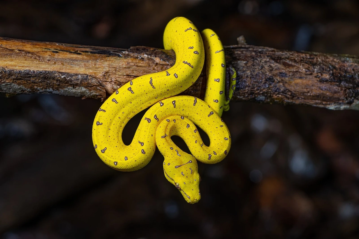
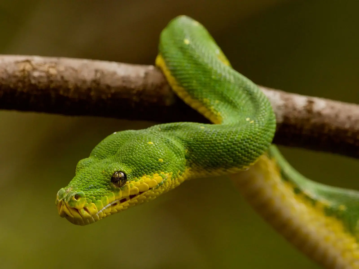
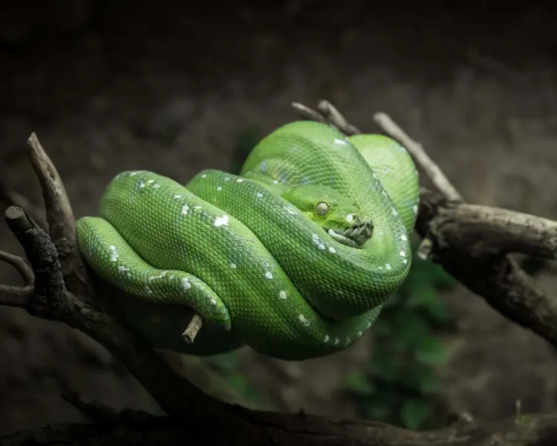
Green tree pythons are found in Indonesia (Misool, Salawati, Aru Islands, Schouten Islands, most of Western New Guinea), Papua New Guinea (including Normanby Island and the d'Entrecasteaux Islands), and Australia (Queensland along the east coast of the Cape York Peninsula). They live in tropical rain forests, monsoon forests, thickets of bamboo, and forest margins with bushes and shrubs. In New Guinea, Green tree pythons can also visit rural gardens.
Green tree pythons are arboreal and lead a solitary life. Most of their time is spent up in trees coiled around branches. These snakes have a particular way of resting in the branches of trees; they loop a coil or two over the branches in a saddle position and place their head in the middle. Green tree pythons are primarily nocturnal hunters. They capture prey by holding onto a branch using the prehensile tail and striking out from an S-shaped position and constricting the prey. Wild specimens have also been observed wrapped around the base of small tree trunks, facing down in an ambush position, waiting for ground mammals to prey upon them as they pass by. Green tree pythons may also hunt their prey on the ground using their labial pits and acute sight.
Green tree pythons are carnivorous reptiles. Their diet consists mostly of small mammals, such as rodents, and sometimes reptiles, such as geckos and skinks.
